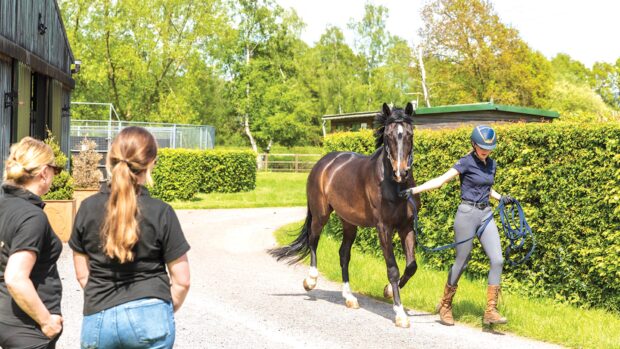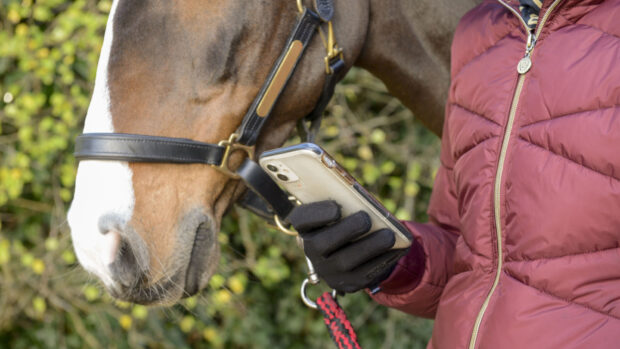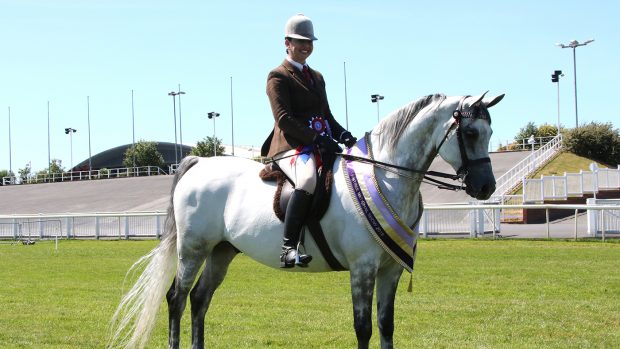International grand prix dressage rider and trainer Anna Ross discusses educational apprenticeships and why good horses don’t come cheap
TWO weeks ago, it was National Apprenticeship Week, and there has been much discussion about equestrian degrees and colleges, particularly whether they adequately prepare students for the industry. After all, it is one that ultimately needs staff who can read a horse, not a textbook.
Apprenticeship schemes provide learning “on the job”, overseen by a college supervisor, and I have been fortunate to have had many great apprentices who have gone on to carve successful careers. Then again, those who enter into it without an open mind are unlikely to find themselves on podiums in the future.
I have several great long-term staff who came up through the scheme, including international and grand prix riders Beth Bainbridge (pictured above) and Alex Baker, along with the up-and-coming Jess Ralton, who now help train our teams of apprentice riders as well as our horses.
Some college students, though academically gifted, lack experience and therefore have a false sense of security around untrained sport horses. Even if students are taught correct protocol at colleges, the consequences of being unprepared can remain undemonstrated.
One such student was recently reluctant to use protective gear to lunge a young horse. “Gloves or skin graft,” I overheard Jess ask cheerily…
In my experience, there are plenty of young people out there who are happy to work hard if their own hopes and dreams are being fulfilled.
The real cost of producing young sport horses
WE’VE had brisk sales of young horses at Elite Dressage recently, so I read with interest the recent feature in Horse & Hound magazine about the cost of buying a horse (3 February).
If the real costs of labour, housing, broodmare investment, vet fees, semen costs, failed attempts and keep fees are taken into account, it costs around £15,000 to bring a purpose-bred young dressage horse to three years old.
Costs after this point increase considerably as it needs to be backed and trained in preparation for a new partner. Most clients want horses that have been to a couple of shows in the hope that it will not take off like a greyhound out of the traps the first time it hears the judges’ bell, or perform a full pike and twist at its first sight of the warm-up arena.
Giving a horse these early experiences may take an experienced rider and handler half a day at a time. Approximately four to five hours for two skilled people at just minimum wage is over £100, plus affiliation, entry fees and travel coming to another £100 – the costs of that good education add up fast.
What’s the solution for riders with lower budgets? Breeding a horse themselves out of a solid mare using a proven stallion, or buying a younger horse can spread the costs. Yearlings and two-year-olds can represent good value, or perhaps wait a year longer and save the money you would have spent on livery in that time to put towards the purchase price?
Consider whether the horse needs to be a purpose-bred warmblood for the job required. Does it need a perfect set of X-rays if it has a good history of soundness? Is it the end of the world if it has a minor stable “vice” or a small sarcoid? And do bear in mind that walks and canters need to be bought,
but a good trot can definitely be created.
If a purpose-bred dressage horse is backed, competed and sold for less than £20,000 at four years old, it’s likely someone is making a loss. There can be genuine reasons, but it’s wise for the buyer to be aware of this.
Some clients request the dressage equivalent of Red Rum with a similar winning record but without his well publicised soundness issues – along with a guarantee it will never be sick, sorry, lazy or crazy – for less than the cost of production.
This sort of unicorn does exist but it has wheels or rockers, not hooves and a heartbeat.
- What do you think is a fair price for a horse? Let us know at hhletters@futurenet.com
This exclusive column will also be published in Horse & Hound magazine, on sale Thursday 24 February
You may also be interested in…

How much does it cost to breed a horse?

‘For a small-scale breeder, every foal has to count’: Meet the breeder of one of Britain’s most exciting young horses

How to master sitting trot: top tips to help you become dressage ready

How to teach a horse extended trot – and other training tips from Anna Ross

Subscribe to Horse & Hound magazine today – and enjoy unlimited website access all year round




